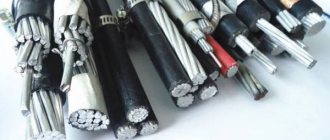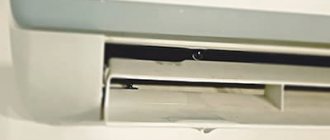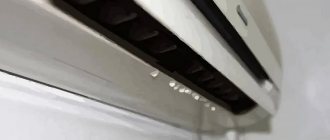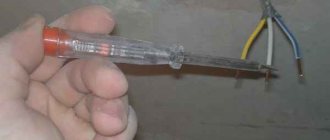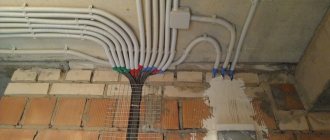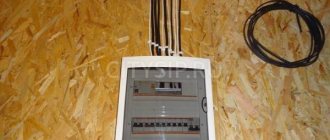In certain industries, extremely stringent requirements for the quality of water treatment are applied. In particular, in microelectronics and pharmaceuticals, one of the most important indicators is the electrical conductivity of water. The ability of a specially prepared liquid to conduct current and the magnitude of its resistivity affect the efficiency of some technological processes.
The physical property of water - conductivity is regulated for such industries by the requirements of current regulatory documents. The article discusses the main factors that determine the level of its resistance, units, methods and instruments for measurements. The reader is offered an overview of the most effective ways to reduce these indicators using professional equipment.
... and dielectric
But it turned out that the conductor is not water itself, but the impurities that are almost always present in it. What is absolutely certain: water is a universal solvent, so it always contains some kind of suspension or well-dissolved impurities. Including ions of mineral salts, which precisely conduct current.
It is possible to purify the life-giving liquid and make it distilled; such methods exist. And then it becomes a dielectric, that is, it practically does not pass current through itself.
Questions to check
The experiment can be carried out several times. Changing the water temperature, for example. Or comb size. After this, to check how the child has learned the knowledge, ask a few questions.
Does water temperature affect how much the stream bends? Does comb size affect the static power of electricity? Does air humidity affect this very power? (To do this, try an experiment after someone has taken a shower.) Does the material the comb is made from affect the static power?
Thus, with the help of a basic experiment, children can easily and simply explain what electricity is. The main thing is that such training will definitely interest them. But this is the most important thing for a child. If there is no interest in learning, there will be no knowledge. Therefore, parents need to help their children as much as possible. Moreover, during a pandemic, when many classes are held at home, and it is difficult for children to learn new material outside of school walls. Be patient and you will succeed! Good luck with your education!
Source
Cleanliness is a temporary concept
We can see and purchase distilled water at some retail outlets and pharmacies. It is used in the production of certain types of products; it is needed in medicine, for example, for diluting powdered drugs used for injection; and in other branches of human activity.
But if we have purchased a certain volume of such purified water, it will not remain sterile for long. Accordingly, it will not always be a dielectric. Its solubility properties will come into play again, it will absorb gases from the air, particles of substances from the walls of vessels, etc.
Source
Conducting an experiment
Open the tap. Adjust the thickness of the water jet. It should be very thin.
Run a plastic comb through your hair several times. Slowly bring the comb to the water. But don't touch the jet. In this case, the water will bend towards the comb.
You can also use a balloon to conduct the experiment. The effect will be the same.
Physicists have uncovered the secret of why water conducts current
MOSCOW, December 2 – RIA Novosti. Scientists have tracked for the first time how one water molecule transfers protons to its “neighbor” and uncovered the secret of why water passes current while other substances similar to it do not, according to an article published in the journal Science.
“When a current passes through water, the oxygen atoms hardly have to move. This process can be compared to Newton's famous "cradle", a set of suspended balls lined up in a line. If you pick up one of them and hit a line with it, only the end balls will move, and the rest will stand still,” says Mark Johnson from Yale University (USA).
Distilled water, like many other substances consisting of two non-metallic elements, is an insulator that almost does not allow electric current to pass through. But if you add even a very small number of ions to water, its electrical conductivity increases sharply and it becomes a full-fledged conductor. Scientists have been arguing about why water conducts current for more than two centuries.
In the early 19th century, German chemist Theodor Grotthus proposed a theory that explained why water passed current through itself and why electricity could decompose it into hydrogen and oxygen. He believed that water molecules could capture extra protons and transfer them to each other, like a baton in a relay race, due to the formation of new hydrogen and covalent bonds and their rapid disintegration.
Source
Electric shock protection
Modern electrical appliances are designed to be as safe as possible for humans. The wires and all parts of the device are placed in an electrically insulating shell. But still, in some cases, electricity can cause harm. If the insulation is damaged and a current breakdown occurs on the device body, you can get a serious shock. Such impacts lead to injury and sometimes death. Sometimes injury occurs not from the current itself, but from its consequences. The person is jerked back, thrown back, and hits their head or other part of the body on a hard object.
That is why it is important to purchase only high-quality household appliances and install an RCD (residual current device) in the house. You should never grab wires with your bare hands without being 100% sure that they are de-energized. You should handle capacitors with care, and it is advisable to read the instructions before using even a completely familiar electrical appliance.
Source
Electrical conductivity of water
In certain industries, extremely stringent requirements for the quality of water treatment are applied. In particular, in microelectronics and pharmaceuticals, one of the most important indicators is the electrical conductivity of water. The ability of a specially prepared liquid to conduct current and the magnitude of its resistivity affect the efficiency of some technological processes.
The physical property of water - conductivity is regulated for such industries by the requirements of current regulatory documents. The article discusses the main factors that determine the level of its resistance, units, methods and instruments for measurements. The reader is offered an overview of the most effective ways to reduce these indicators using professional equipment.
Is the distillate a transmitter or a dielectric?
Since the solution has a low electrical conductivity and a fairly high level of insulating permeability, it is a dielectric.
That is, such a mixture does not conduct electric current well or does not conduct it at all.
The fact that a liquid is considered a dielectric is influenced by the absence of salts in it . They are the ones who improve conductivity.
The lack of salts is associated with the absence of free ions in solutions. They cannot transmit discharges. And the molecules themselves are considered weak conductors.
You will find a lot of useful and important information about distilled water in this section.
What is the electrical conductivity of water
The most common liquid on Earth has the ability to conduct direct or alternating current.
The electrical conductivity of water is a quantitative characteristic of this property, which is determined by the presence of charged particles - positive and negative ions. The latter include chemical elements that are part of the following organic and inorganic compounds:
- Alkalis.
- Salts of alkaline earth and other metals, primarily chlorides and sulfides (sulfates).
- Carbonates.
This indicator is higher, the more positively charged ions - cations - and negatively charged ions - in the liquid. Those. electrical conductivity is directly related to the salinity content of water. The specific electrical conductivity of water is inversely related to the resistance of water and is determined for the volume of liquid that is located in the gap between two electrons with an area of 1 cm2. The latter are located at a distance of 1 cm from each other.
Why is this happening?
When you comb your hair with a comb, the tiny electrons present in the hair are collected on it. They are negatively charged. Once the comb is negatively charged, objects with a positive charge will begin to be attracted to it. Like metals to magnets. In short, when you bring a negatively charged comb to the faucet, positively charged water is drawn towards it.
You can do another experiment with a comb. Tear some material into very small pieces. Then charge the comb again by running it through your hair and bring it to these pieces of fabric. They will rise from the table to the ridge in the same way that water was attracted to it. And all this is due to the action of static electricity.
Electrical conductivity standards for natural water
In the Russian Federation, requirements for water treatment quality parameters are regulated by state standards and other documents. Specific indicators of electrical conductivity of water for various purposes are established by the following regulations, depending on the degree of purity:
- GOST 52501-2005. For laboratory tests - no more than 0.1 and 1.0 µS/cm for the first and second degrees, respectively.
- GOST 6709-97. For distilled water - less than 5*10-4 S/cm.
- FS 2.2.20020.15. Purified water for pharmaceutical purposes - not higher than 4.3 µS/cm.
- FS 2.2.0019.15. Water for preparing medicinal solutions and injections.
Where to buy and how much does dry water cost?
Buying dry water is quite difficult. This can only be done by having friends who work in specific industries or in specialized online stores. For one liter you will have to pay 4 thousand rubles or more. For a barrel of 15 kilograms you will have to pay more than 2 thousand euros.
Firefighting remains Novec's main application area today. However, China is already trying to use this liquid as a coolant for cooling computer equipment. And perhaps soon the dry water recipe will also be used to cool home computer processors.
Electrical conductivity indicators: main factors
Natural bodies of water contain many soluble impurities of inorganic origin. They determine the basic physical properties of water, including electrical conductivity. The value of the latter is directly dependent on a number of factors:
- Concentrations of charged particles.
- Composition and nature of ions.
- Liquid temperatures.
The greatest influence on the electrical conductivity of water is exerted by hardness salts, more precisely sodium cations (Na + ), potassium (K + ) and calcium (Ca 2+ ), as well as chlorine anions (Cl - ) and acid groups (SO4 2- and HCO3 - ). The presence of di- and trivalent iron ions (Fe 2+, Fe 3+), as well as manganese (Mn 2+) and aluminum (Al 3+) in the liquid in small concentrations has virtually no effect on the resistivity.
With increasing temperature, the electrical conductivity of water increases significantly due to an increase in the velocity of ions, a decrease in their solvation and a decrease in viscosity. In this case, an increase in conductivity associated with an increase in the concentration of cations and anions is observed only up to a certain limit. Having reached a maximum, it begins to decrease, which is due to increased interaction of charged particles with each other and a decrease in the degree of dissociation.
Weight, viscosity, fluidity
The properties of the new Novec substance are unique. No other composition has them. It is significantly heavier than ordinary water. If, for example, you take a two-liter bottle of Novec and put it on the scale, then the needle will approach 3 kilograms. The density of the liquid is 1.5 grams per cubic centimeter.
The viscosity of dry water is two times lower than that of ordinary water. Therefore, its fluidity exceeds even the fluidity of alcohol. Hence the unusual wetting properties. If, for example, you dip two identical paper napkins in Novec and in ordinary water, you can immediately see the difference. In ordinary water, the paper will quickly become wet. In dry water, the napkin will only become slightly damp, and soon after it is removed from the liquid it will again be completely dry. It seems that this liquid substance does not wet anything. But, in fact, she is simply too mobile.
Determination of water electrical conductivity indicators
The level of resistance of a liquid to electric current is measured using special instruments. To quantify the level of electrical conductivity of water, the units of measurement established by the international SI system are used. The use of unified methods and standards in this area simplifies laboratory research and understanding of the results obtained.
Units
In our country, a special unit is used to measure water conductivity - S/m (Siemens per meter). It relates to resistivity as 1 S/m = 1/1 Ohm/m. In this case, the described indicator for natural water is:
- For fresh rivers: from 50 to 1500*10 -6 S/m.
- For distilled water: from 0.5 to 5*10 -6 S/m.
- For ultrapure deionized: from 0.1 to 0.2*10 -6 S/m.
For convenience, a derivative is used as a unit of electrical conductivity of water, which is one ten-thousandth of the base and written as µS/cm.
The specific resistance of a liquid is determined to a large extent by the level of mineralization. In the USA, the TDS value, which indicates the content of soluble salts, is used instead of µS/cm to measure water conductivity. This figure is calculated in parts per million and written as ppm. To convert this unit to an international one, a correction factor is used.
Measurement methods and instruments used
In our country, the specific conductivity and pH of a liquid are determined electrometrically. In order to accurately calculate the electrical conductivity of water, specialists use the methodology established by RD 52.24.495-2005. This document will apply to surface water supplies and wastewater.
To measure the electrical conductivity of water, a calibrated conductometer with stainless steel electrodes is used. To calibrate the device, a standard solution with a value of at least 1500 µS/cm is used, and the deviation from the nominal value should not exceed 2%.
During measurements of the specific electrical conductivity of water, its temperature is recorded, and the desired value is determined using special tables. If devices with temperature compensation are used, the true value immediately appears on the screen, which greatly simplifies the process.
Is it possible to mix dry and regular water?
In addition to the above amazing properties, dry water has one more feature. She easily rejects other substances. For example, in Novec, ink or paint from a felt-tip pen will not float on paper. Which is almost impossible to prevent in ordinary liquid.
You cannot even brew tea from a bag in boiling dry water. This liquid cannot dissolve the substances from the tea leaves.
Mixing regular and dry water also won’t work. You can verify this by dropping a dye, for example brilliant green, into such a mixture. You will see a clear boundary between the liquids. Zelenka will dissolve in ordinary water, and dry water will remain transparent. The same effect will occur if you try to mix Novec with alcohol.
Reducing the electrical conductivity of water: professional methods
Modern water treatment systems provide the required quality indicators. In order to reduce the electrical conductivity of water in such installations, the following treatment methods are used:
- reverse osmosis;
- electrodeionization;
- ion exchange.
The listed technologies differ in their level of efficiency and technical and economic parameters. The choice of one method or another is made taking into account the water conductivity indicators required by the customer. Let's take a closer look at the capabilities and features of each of the presented methods.
Reverse osmosis
The essence of the method is to use semi-permeable membranes to obtain highly purified permeate. During the process of reverse osmosis, the conductivity of water decreases significantly due to its deep demineralization. Modern industrial reverse osmosis installations separate up to 99.9% of all impurities, including hardness salts. Such systems have a capacity of up to 1000 l/h.
The electrical conductivity of osmotic water, depending on the model of the installation used, ranges from 0.1 to 5 µS/cm. Permeate without additional processing belongs to the first degree of purification, and can be used in medicine, pharmaceuticals and other high-tech industries. Reverse osmosis plants are currently the main sources of purified water.
Electrodeionization
Technologies for deep purification of liquids from salts are currently being developed and implemented. The necessary physical properties of water, including electrical conductivity at a level of 0.055 μS/cm, are provided by the electrodeionization method. Water treatment using it is carried out in three stages:
- Electrodialysis. The removal of cations and anions from water is carried out using con-selective membranes, which are located in front of the electrodes. A constant voltage is applied to them, ensuring the movement of charged particles.
- Ion exchange. To speed up the process, a composition of special high-molecular resins consisting of cation exchangers and anion exchangers is placed in the chamber. Polymers have a porous structure and absorb charged particles and replace them.
- Regeneration. Under the influence of direct current, water molecules dissociate, and the resulting ions ensure the restoration of the exchange properties of the filler.
Purified and deionized water has extremely low conductivity, which allows it to be used as solvents for medications. Industrial electrodeionization units have high performance and can be used in thermal power plants.
Dry but doesn't burn
This water is pumped into cylinders that have different pressures. In addition to dry water, nitrogen is pumped into these containers. Due to this, high pressure is formed in the cylinders - when opened, the liquid will come out easier. It is interesting that such water boils at 49 degrees.
The bonds between the molecules of this liquid are very weak. Therefore, it turns into gas more than 50 times faster than ordinary water. A layer of gas appears above its surface, which has a high heat capacity and instantly absorbs the heat generated by the fire source. The fire goes out because it is used to heat the gas, which removes the heat. This means that such a liquid can be used to fight fire. By the way, not only flammable substances are marked in red, but also fire extinguishers.
A reasonable question - barrels of dry water have a gigantic weight, but a fire extinguisher must be light and mobile, how can you put out a fire with the help of such machines?
In fire extinguishing systems
A pipeline is laid under suspended ceilings; dry water cylinders are used not as a fire extinguisher, but as the main component of an automatic fire extinguishing system. The pipe is connected to the cylinder and placed under the suspended ceiling. For such a system to work, it is connected to electricity. Spray nozzles are screwed on at the outlet of the pipes.
Dry water is stored in these cylinders.
How does this system work? Suppose a short circuit starts a fire. The flame is getting larger and needs to be extinguished. Dry water is sprayed from the ceiling and blocks the spread of fire in just 1.5 seconds.
In the fight against global warming
There are scientists who believe that this unusual liquid can act as a panacea for an important problem on a planetary scale. The thing is that this substance is capable of absorbing various types of gases. But at the moment, no serious developments have been made on this topic.
Source
Specific electrical conductivity in water
Diasel Engineering offers effective technical solutions to reduce the electrical conductivity of water. The company supplies equipment for reverse osmosis, electrodeionization and ion exchange systems. Our specialists install water treatment plants, carry out the necessary commissioning work and provide their maintenance.
Reducing the electrical conductivity of water to the required levels is an extremely difficult task and requires the involvement of professionals to solve it. NPK Diasel LLC invites enterprises in need of deep cleaning units to cooperate. Comprehensive solutions to water treatment problems are our main specialization.
Source
Dependence of resistance on temperature
The most common effect of current is thermal effect. As already noted in the last chapter, the mechanism of this action is the collision of electrons with the nodes of the crystal lattice, as a result of which the kinetic energy of the electrons is converted into the internal energy of the conductor.
In turn, having increased internal energy, lattice nodes begin to vibrate faster, colliding with electrons more often. That is, electrons are braked more efficiently. In other words, as the temperature of the conductor increases, its electrical resistance increases.
A simple experiment confirming this theoretical conclusion can be heating the conductor in a circuit with the lamp and measuring instruments turned on (see Fig. 3).
Rice. 3.
As the conductor warms up, the lamp will begin to shine less brightly, and the instruments will begin to show a drop in current strength.
After qualitative confirmation of the dependence of resistance on temperature, a quantitative dependence was obtained. After a series of experiments, it was found that the relative increase in resistance is directly proportional to the absolute increase in temperature:
Or:
Here: – resistance at a given temperature, – resistance at temperature ; – temperature change relative to ; – temperature coefficient of resistance. Temperature coefficient is a tabular value known for most metals. Coefficient dimension:
Since the linear dimensions of the conductors change slightly when the temperature changes, this means that the resistivity changes, and according to the same law:
Applications of Superconductivity
The use of superconductivity greatly facilitates many technical aspects of the use of electric current. Firstly, no resistance means no heating losses, which typically account for 15% of the total energy. As confirmation, we can cite the experiment of passing current through a conductor immersed in liquid helium for two years, which was interrupted only due to a lack of helium
The absence of heating and energy loss is extremely important for electric motors and electronic computers
In addition, due to the lack of resistance, extremely high currents flow in superconductors, creating strong magnetic fields, which can be used in thermonuclear fusion.
A household example of the use of superconductors is the currently existing railway network with magnetic levitation trains (Fig. 6):
Rice. 6. Magnetic levitation train
High temperature superconductors
After the discovery of superconductivity, Onnes, trying to create a superconducting electromagnet, discovered that changes in current, or magnetic fields, destroy the effect of superconductivity. Only by the middle of the twentieth century was it possible to create superconducting electromagnets.
Also an extremely important discovery was made in 1986. Materials have been discovered that exhibit superconductivity at temperatures around
Such temperatures can be achieved using liquid nitrogen, which is much cheaper than liquid helium. However, when trying to create such superconducting wires and cables, they encountered the problem of the extreme fragility of such materials, which crumble during the rolling process. At the moment, work is ongoing to solve this problem.
In the next lesson we will look at electric current in semiconductors.
Bibliography
- Tikhomirova S.A., Yavorsky B.M. Physics (basic level) - M.: Mnemosyne, 2012.
- Gendenshtein L.E., Dick Yu.I. Physics 10th grade. – M.: Ilexa, 2005.
- Myakishev G.Ya., Sinyakov A.Z., Slobodskov B.A. Physics. Electrodynamics. – M.: 2010.
Additional recommended links to Internet resources
- Storage.mstuca.ru (Source).
- Physics.ru (Source).
- Elements (Source).
Homework
- How does the resistance of metals depend on temperature? What causes this dependence?
- How many times will the resistance of a copper wire increase when the temperature increases from 200 to 300?
- Water got on the connected electric stove coil. How has the glow of the tile changed?
- *Do all metals become superconductors when cooled to low enough temperatures?
How to make water stop conducting electricity?
Everyone knows that water conducts electricity well. For this reason, for example, you should not swim in a thunderstorm, you should not work with electrical appliances with wet hands, and so on. But does water actually conduct current?
In fact, it is not water that conducts current, i.e. not water molecules, but various impurities contained in it, in particular ions of various mineral salts. Water is an excellent solvent, so in nature there are always many different impurities dissolved in water, which lead to the fact that water in its natural state on Earth always conducts current.
But modern technologies, if necessary, make it possible to completely purify water from all impurities, leaving only the molecules of the water itself. Water purified from impurities is called distilled. So distilled water almost does not conduct electric current, but instead is a good dielectric.
Distilled water is widely used in technology, medicine and industry and is produced in large quantities. You can even buy it in auto stores and pharmacies.
However, do not rely too heavily on the fact that the water is purified and therefore should not conduct current. The fact is that distilled water requires special handling, otherwise it will very quickly dissolve many impurities in itself and again become a conductor. So in everyday life you will not be able to keep water so pure for too long that it does not conduct current.
All this means that safety precautions when working with electrical appliances and devices still cannot be violated. Remember that the water that you can meet in everyday life always contains impurities and therefore is a good conductor of electric current.
No duplicates found
I'm afraid to ask, what is this post for?
Everyone knows that fresh water is a poor conductor of current. You could even say that it conducts current poorly. Ice is an excellent dielectric. Even tap water is also a poor conductor. Otherwise, homemade boilers made from blades would be impossible.
Not everyone knows, but water can be a dielectric. you just need..
. do not add these two products to it
and on the teaser: piss and salt
and I’m not afraid to ask: what is this post for?!
TS, how did you learn physics in the seventh grade, and it only just dawned on you now?
It even does very well! Moreover, a very interesting effect occurs)) if you take 2 graphite electrodes, a 150W light bulb, water from a tap and a glass jar, collect it all so that the jar is in series with the lamp, turn it on at 220, then at first nothing will happen; gas will be released on the electrodes, most likely hydrogen and oxygen at the same time alternating current)) but the lamp will not shine! As the water heats up, most often only 1 electrode begins to gurgle, although it’s possible because I took it from different pencils)) and the lamp will barely glow, then more and more and brighter as the water heats up)) why is this so if I didn’t add any salt to it? ?)) the second interesting point will be that no matter how hard you try, you won’t be able to see how the lamp flickers? So the bank works like a diode?? The lamp seems to be burning on direct current; there is no flickering at all for the camera, much less for the pencil test!!
It is the impurities in water that conduct electricity. Taking advantage of the illiteracy of the people, filter hucksters show terrible experiments with an electrolyzer, as well as a TDS meter.
Salts in water should not be called impurities.
An excellent guide for beginning service technicians. If you brought a recessed smart, feel free to throw it into the distillate. The question is how will you dry it later?
in sulfuric acid: it will perfectly complement the cocktail
Why doesn't it transmit?
Purified solutions are not transmitters of electricity for the following reasons:
- they do not contain dissolved salts or their level is low;
- do not contain charged ions;
- they do not contain other substances that can act as intermediaries in the transmission of electrical discharges.
Electrical conductivity increases due to the presence of impurities and salts in water. And since there are practically no of them in the distillate, the water molecules themselves cannot conduct current.
Current-voltage characteristics
The current-voltage characteristic of a semiconductor diode depends on the material from which it is made and some parameters. For example, an ideal semiconductor rectifier or diode has the following parameters:
- Resistance for direct connection – 0 Ohm;
- Thermal potential – VG = +-0.1 V;
- In the direct section RD > rD, i.e. the direct resistance is greater than the differential resistance.
If all parameters correspond, then the following graph is obtained:
Photo - CVC of an ideal diode
This diode is used in digital electrical engineering, the laser industry, and is also used in the development of medical equipment. It is necessary for high demands on logical functions. Examples: laser diode, photodiode.
In practice, these parameters are very different from real ones. Many devices are simply not capable of operating with such high accuracy, or such requirements are not necessary. An equivalent circuit characterization of a real semiconductor demonstrates that it has serious disadvantages:
Photo - current-voltage characteristic in a real semiconductor diode
This current-voltage characteristic of a semiconductor diode indicates that during direct connection, the contacts must reach the maximum voltage. Then the semiconductor will open to allow the passage of electron charged particles. These properties also demonstrate that current will flow normally and without interruption. But until all parameters match, the diode does not conduct current. At the same time, the voltage for a silicon rectifier varies within 0.7, and for a germanium rectifier it varies within 0.3 Volts.
The operation of the device is very dependent on the level of the maximum forward current that can pass through the diode. In the diagram it is defined by ID_MAX. The device is designed in such a way that when switched on directly, it can only withstand an electric current of limited strength. Otherwise, the rectifier will overheat and burn out, like a regular LED. Different types of devices are used to control temperature. Naturally, some of them affect the conductivity, but they prolong the performance of the diode.
Another disadvantage is that when passing alternating current, the diode is not an ideal isolating device. It only works in one direction, but leakage current must always be taken into account. Its formula depends on the other parameters of the diode used. Most often, circuits designate it as IOP. A study by independent experts found that germanium transmits up to 200 µA, and silicon transmits up to 30 µA. At the same time, many imported models are limited to a leakage of 0.5 µA.
Photo - domestic diodes
All types of diodes are susceptible to voltage breakdown. This is a property of a network that is characterized by limited voltage. Any stabilizing device must withstand it (zener diode, transistor, thyristor, diode bridge and capacitor). When the external potential difference between the contacts of a rectifying semiconductor diode is significantly higher than the limited voltage, the diode becomes a conductor, reducing the resistance to a minimum in one second. The purpose of the device does not allow it to make such sharp jumps, otherwise it will distort the current-voltage characteristic.
Impurities affecting conductivity
It's not just salt that affects conductivity. It can be an alkali or an acid, they just need to react chemically with water and form ions.
Conductivity is most strongly influenced by salts, some acids (sulfuric, hydrochloric) and some alkalis (caustic soda, potassium lye).
Conductivity depends not only on the concentration of salt, but also on its type. The heavier the ions, the less mobile they are. And the greater their charge, the greater the current.
By measuring the conductivity of water, you can determine the degree of its contamination with impurities. Measurements should be carried out at a certain temperature, since this also affects electricity.
There is a simple experiment showing how water conducts electricity when salts are added to it. Its essence is as follows:
- it is necessary to assemble a circuit, inside which there will be a light bulb and two exposed contacts;
- the contacts are lowered into a glass of purified water, thereby closing the circuit;
- Gradually adding salt to the water, watch how the light bulb begins to glow brighter and brighter.
For safety reasons, the experiment should be carried out with rubber gloves. The current source can be a 12 volt battery. A corresponding lamp is connected to it. Stir the salt with a wooden stick.

